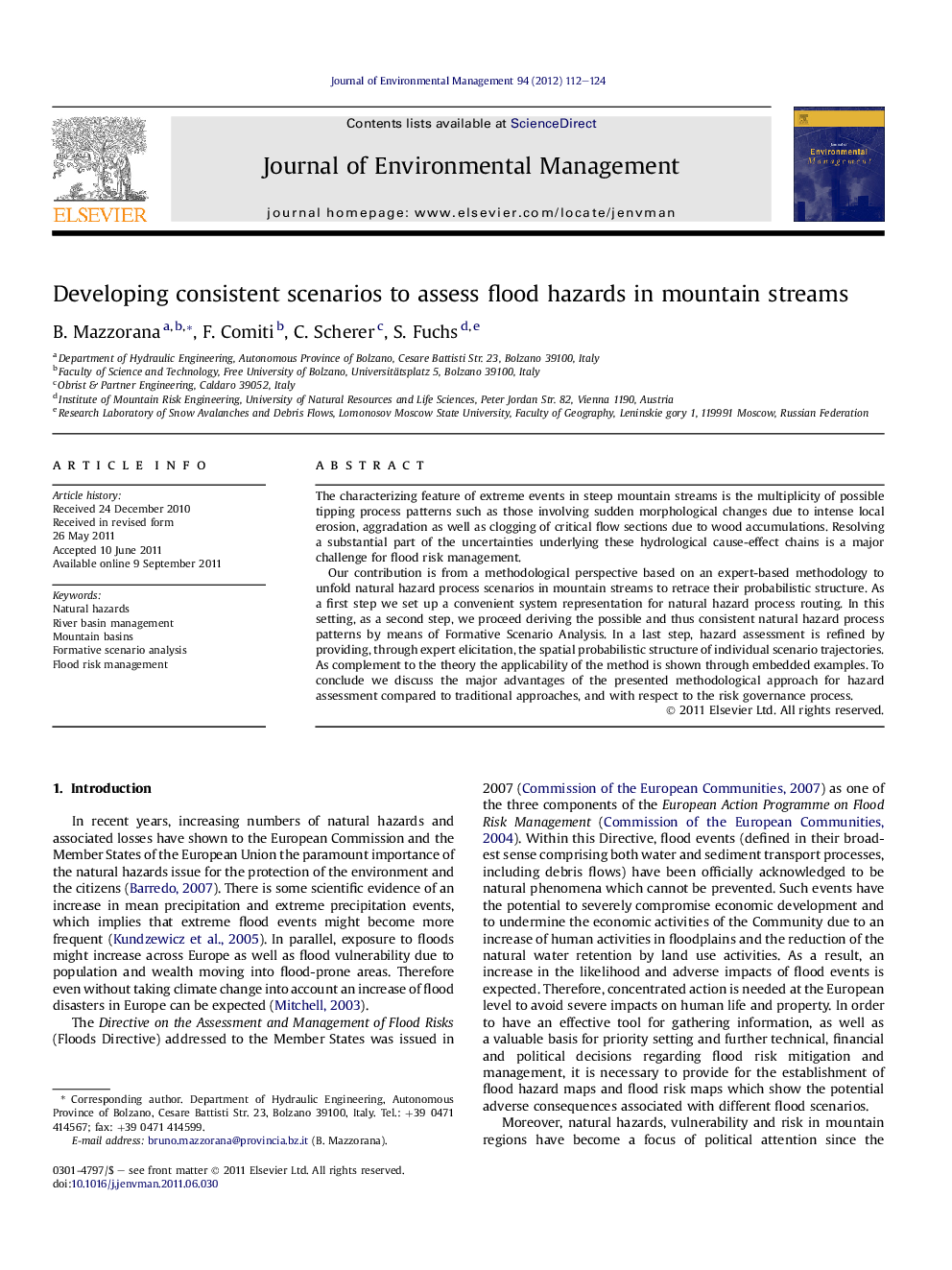| Article ID | Journal | Published Year | Pages | File Type |
|---|---|---|---|---|
| 1057095 | Journal of Environmental Management | 2012 | 13 Pages |
The characterizing feature of extreme events in steep mountain streams is the multiplicity of possible tipping process patterns such as those involving sudden morphological changes due to intense local erosion, aggradation as well as clogging of critical flow sections due to wood accumulations. Resolving a substantial part of the uncertainties underlying these hydrological cause-effect chains is a major challenge for flood risk management.Our contribution is from a methodological perspective based on an expert-based methodology to unfold natural hazard process scenarios in mountain streams to retrace their probabilistic structure. As a first step we set up a convenient system representation for natural hazard process routing. In this setting, as a second step, we proceed deriving the possible and thus consistent natural hazard process patterns by means of Formative Scenario Analysis. In a last step, hazard assessment is refined by providing, through expert elicitation, the spatial probabilistic structure of individual scenario trajectories. As complement to the theory the applicability of the method is shown through embedded examples. To conclude we discuss the major advantages of the presented methodological approach for hazard assessment compared to traditional approaches, and with respect to the risk governance process.
► We propose a knowledge integration method for flood hazard assessment. ► We elaborate consistency matrices as a basis for scenario development. ► Overcoming epistemic and aleatoric uncertainties improves hazard analysis. ► The subsequent planning process benefits from reliable hazard maps.
